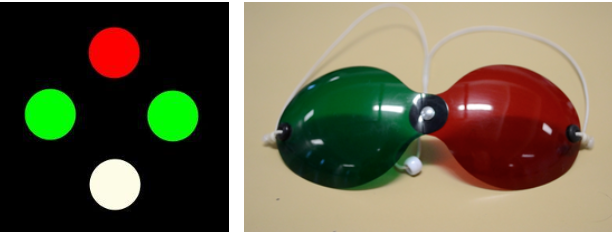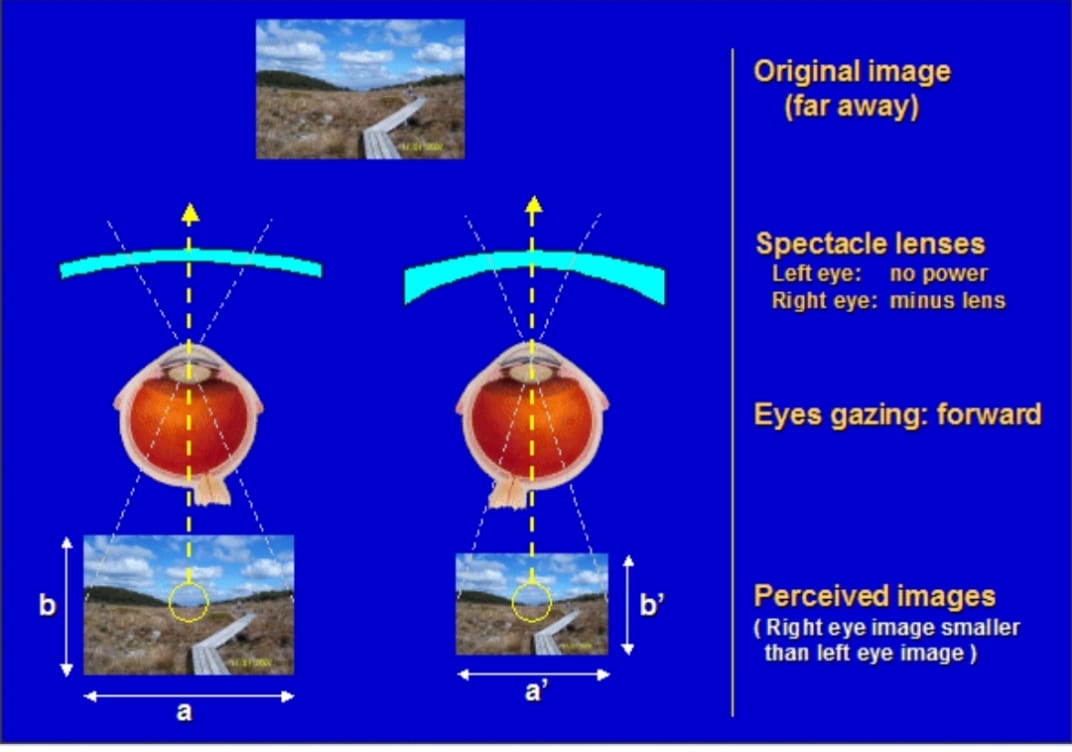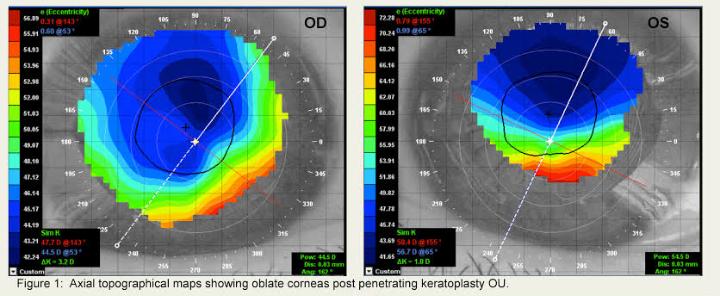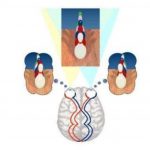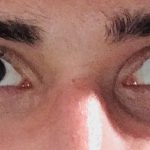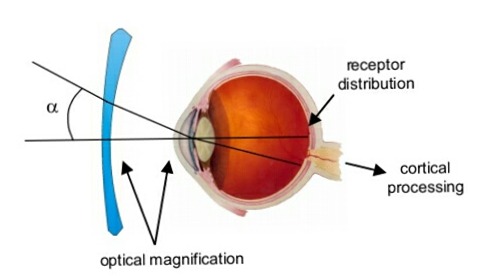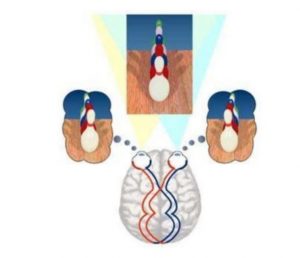Suppression is derived from the latin word “supressus” which is the perfect passive participle of “supprimo”, meaning to “press down”, “press under” or “hold back”.
Suppression of an eye is a subconscious adaptation by a person’s brain to eliminate the symptoms of disorders of binocular vision such as strabismus, convergence insufficiency, anisometropia, aniseikonia and diplopia that tends to prevent fusion. The brain does this by ignoring all or part of the image of one of the eyes. The suppressed area of a person’s visual field is known as a “suppression scotoma”. Suppression can lead to amblyopia.
Tests
During an eye examination, the presence of suppression and the size and location of the suppression scotoma can be determined using subjective tests like the Worth 4 dot test, the Bagolini striated lens test, the 4 prism base out test and Dichoptic Motion Coherence Threshold Measurements
Worth 4 dot test: Worth 4 dot test, also known as the Worth’s Four Light Test or W4LT, is a clinical test mainly used for assessing the degree of binocular vision and binocular single vision. It is also the most precise suppression test.
The W4LT can be performed by the examiner at two distances, at near (at 33 cm from the patient) and at far (at 6 m from the patient). It is done in a dimmed
illumination.
At both testing distances the patient is required to wear red-green goggles (with one red lens over one eye, usually the right, and one green lens over the left) When performing the test at far (distance).
Because the red filter blocks the green light and the green filter blocks the red light, it is possible to determine if the patient is using both eyes simultaneously and in a coordinated manner.
Questions asked during the test are:
- How many lights are you seeing?
- What colour are they? Where are they located?
- Are all the lights in line? Or are some higher than the others?
- Do all the lights show up at one time, or are they flashing on and off?
Results
- Normal retinal correspondence
- They see 4 lights, 1 red, 2 green and one mixed colour
- The two green lights will be to either side with the red light slightly above them and the mixed coloured light below the red
This is recorded as : W4LT (D): 4 lights (BSV)
- Abnormal retinal correspondence
- They see 4 lights, 1 red, 2 green and one mixed colour
- The two green lights will be to either side with the red light slightly above them and the mixed coloured light below the red
This is recorded as : W4LT (D): 4 lights (ARC)
- Esotropia
- They see 5 lights, 2 red and 3 green
- The lights are horizontally displaced, seen side by side
- The 2 red lights from the right eye are seen on the right side
- The 3 green lights from the left eye are seen on the left side
This is recorded as: W4LT (D): 5 lights (Uncrossed Diplopia) ET
-
Exotropia
- They see 5 lights, 2 Red and 3 Green
- The lights are horizontally displaced, and are seen side by side
- The 2 Red Lights from the Right eye are on the left side
- The 3 Green lights from the Left eye are on the right side
-
Hypo-/hyper-tropia
- They see 5 lights: 2 red and 3 green
- The lights are vertically displaced in relation to one another
- The green lights (left eye) are on top of the red lights (right eye), which is interpreted as : R HT or LHypoT
- The red lights (right eye) are on top of the green lights (left eye), which is interpreted as: RHypoT or L H T
This is recorded as: W4LT (D): 5 lights (vertical diplopia)
- Suppression
- They see only the 3 Green lights from the Left eye, which is interpreted as Right eye suppression
- They see only the 2 Red lights from the Right eye, which is interpreted as Left eye suppression
- If All 5 lights are never present at the same time, but the patient is switching between the two responses. This result is interpreted as Alternating Suppression
This can be recorded as:
- W4LT (D): 3 Lights (R Supp.)
- W4LT (D): 2 Lights (L Supp.)
- W4LT (D): 2 or 3 Lights (Alt. Supp.)
Suppresion can lead to amblyopia, it is usually treated with vision therapy.
